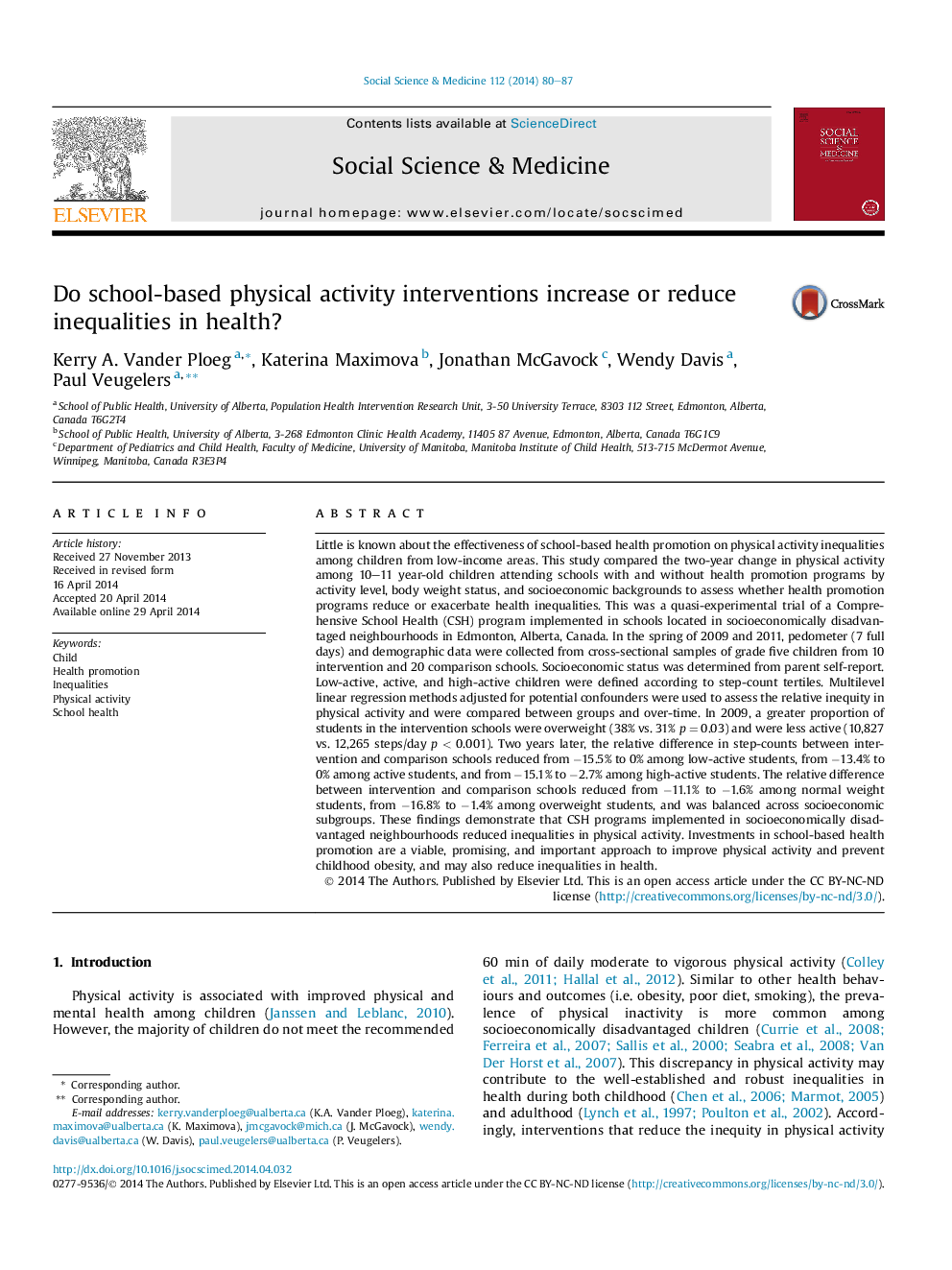| کد مقاله | کد نشریه | سال انتشار | مقاله انگلیسی | نسخه تمام متن |
|---|---|---|---|---|
| 7334884 | 1476056 | 2014 | 8 صفحه PDF | دانلود رایگان |
عنوان انگلیسی مقاله ISI
Do school-based physical activity interventions increase or reduce inequalities in health?
ترجمه فارسی عنوان
آیا مداخلات فیزیکی مبتنی بر مدرسه باعث افزایش یا کاهش نابرابری در سلامت می شود؟
دانلود مقاله + سفارش ترجمه
دانلود مقاله ISI انگلیسی
رایگان برای ایرانیان
کلمات کلیدی
کودک، ارتقاء سلامت، نابرابری، فعالیت بدنی، بهداشت مدارس،
موضوعات مرتبط
علوم پزشکی و سلامت
پزشکی و دندانپزشکی
سیاست های بهداشت و سلامت عمومی
چکیده انگلیسی
Little is known about the effectiveness of school-based health promotion on physical activity inequalities among children from low-income areas. This study compared the two-year change in physical activity among 10-11 year-old children attending schools with and without health promotion programs by activity level, body weight status, and socioeconomic backgrounds to assess whether health promotion programs reduce or exacerbate health inequalities. This was a quasi-experimental trial of a Comprehensive School Health (CSH) program implemented in schools located in socioeconomically disadvantaged neighbourhoods in Edmonton, Alberta, Canada. In the spring of 2009 and 2011, pedometer (7 full days) and demographic data were collected from cross-sectional samples of grade five children from 10 intervention and 20 comparison schools. Socioeconomic status was determined from parent self-report. Low-active, active, and high-active children were defined according to step-count tertiles. Multilevel linear regression methods adjusted for potential confounders were used to assess the relative inequity in physical activity and were compared between groups and over-time. In 2009, a greater proportion of students in the intervention schools were overweight (38% vs. 31% p = 0.03) and were less active (10,827 vs. 12,265 steps/day p < 0.001). Two years later, the relative difference in step-counts between intervention and comparison schools reduced from â15.5% to 0% among low-active students, from â13.4% to 0% among active students, and from â15.1% to â2.7% among high-active students. The relative difference between intervention and comparison schools reduced from â11.1% to â1.6% among normal weight students, from â16.8% to â1.4% among overweight students, and was balanced across socioeconomic subgroups. These findings demonstrate that CSH programs implemented in socioeconomically disadvantaged neighbourhoods reduced inequalities in physical activity. Investments in school-based health promotion are a viable, promising, and important approach to improve physical activity and prevent childhood obesity, and may also reduce inequalities in health.
ناشر
Database: Elsevier - ScienceDirect (ساینس دایرکت)
Journal: Social Science & Medicine - Volume 112, July 2014, Pages 80-87
Journal: Social Science & Medicine - Volume 112, July 2014, Pages 80-87
نویسندگان
Kerry A. Vander Ploeg, Katerina Maximova, Jonathan McGavock, Wendy Davis, Paul Veugelers,
